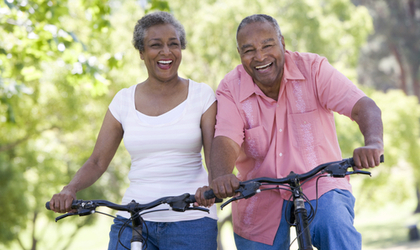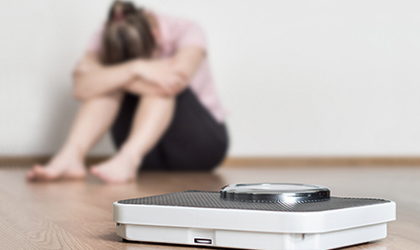
Many people struggle with cold hands and feet in the UK. And it can make bracing the winter elements tremendously challenging. Without the warmth of the sunshine, blood flow resistance increases and blood vessels constrict. To keep the core temperature in a healthy range, the body reduces blood flow to the skin and extremities. And that’s why these areas tend to feel the chill much more.
What deficiency causes cold hands and feet?
Aside from the cold weather, cold hands and feet can also be a sign of an iron deficiency. Iron deficiency anaemia can cause cold extremities because a lack of haemoglobin rich red blood cells means the body struggles to circulate oxygen to the right tissues in the body.
Health Conditions
On rare occasions, cold extremities can be a sign of a health condition. One common condition in particular blocks the blood supply to extreme parts of your body, usually your fingers and toes, by constricting the small blood vessels. Click here to find out more.
Exercise regularly
Movement is central to wellness – and it’s no different when it comes to your circulatory health. Regular exercise makes your circulatory system more flexible, more expansive, and more robust. And that’s a great thing if you struggle with cold hands and feet.
Besides walking as much as you can – aiming for that golden 10,000-step mark – peppering your day with short bursts of activity (we like to call them ‘movement snacks’) is an easy, accessible way to show your circulatory system some love.
-
Wake yourself up with a few stretches in bed
-
Do some triceps dips as you wait for your coffee to brew
-
Get off the bus a few stops earlier
-
Do some squats in between Zoom meetings
-
Cycle to work if you can
Embrace yoga for circulation
Aside from its restorative, mood-enhancing qualities, yoga is one of the best activities for circulation. The focus on conscious breathing – coupled with dynamic movement – increases the flow of oxygen-rich blood throughout the body.
Yoga is an all-around circulation-boosting practice, but some asanas (postures) are particularly famed for getting the blood moving to your extremities. Forward folds, legs-up-the-wall, and inversions, like headstands, shoulder stands, and handstands, are excellent options.
Bonus: yoga helps you decompress and relax, which is great for busting stress – another way to support your circulatory system.
Wrap up warm
On a practical note, there are some simple everyday changes you can make to keep your extremities comfortable as temperatures drop. Always dress warmly in cold weather. That means wearing lots of thin layers and using hand warmers, thick socks, and insulated gloves.
Quit smoking
Smokers often complain of cold hands and feet. That’s because nicotine has a vasoconstrictive effect and causes blood vessels to narrow, which can lead to a partial or total loss of circulation in some regions of the body, most notably, the extremities. Giving up can feel like a daunting task, but it’s well worth considering – for your circulation and overall health.
Enjoy the benefits of a cold shower
A cold shower on a frosty morning may sound far from enticing (brrr). But the self-professed ‘Ice Man’, Wim Hoff, is a strong believer that ‘a cold shower a day keeps the doctor away’. Exposure to cold water reduces your core body temperature, so your body has to work faster and harder to warm itself up. To do this, it increases blood flow to the skin’s surface and promotes healthy circulation (1).
Challenge yourself: try to have a blast of cold water at the end of your morning shower. Start with 10 seconds and build up gradually.
Utilise deep breathing techniques
As babies, we intuitively knew to breathe through our noses and bellies. But this mechanism is no longer as instinctive as it once was. Instead, many of us have become thoracic (shallow chest) breathers, most likely thanks to the ubiquity of modern-day stress (and the cultural expectation to have a flat stomach!). And yet, shallow breathing isn’t serving our circulatory health – or our overall health, for that matter.
If you have cold hands and feet, look no further than the magical portal of your nose. Deep belly breathing through your nose helps detoxify the body. It encourages the blood vessels to dilate, supporting overall circulation (2).
Relax your mind
The cost of living, late-night work emails, relationship woes, sometimes, it can feel impossible to avoid the stress of our modern-day lives. Stress triggers the ‘flight or fight’ response in the body. In this, blood flow is redistributed to the main organs, like the heart, as well as large muscles in preparation to flee. And this can make your extremities cold.
Taking the time to manage stress throughout the day is one of the best things you can do to support your circulatory health.
-
Find a quiet spot to meditate
-
Go for a brisk walk
-
Do a short yoga sequence
-
Scream into a pillow (it works!)
-
Write down your worries in a journal
-
Call a friend and off-load
Rethink your alcohol intake
The appeal of alcohol is undeniable. And there’s even some evidence to suggest a moderate amount of red wine may support circulation (3). The problem, however, is excessive alcohol consumption since it prevents blood from being pumped optimally throughout the body, often resulting in circulatory issues.
The NHS advises against drinking more than 14 units a week, so try to avoid having more than one drink a day. And if you’re drinking regularly, consider spreading your consumption over three or more days. Remember, you should also have several drink-free days a week.
Choose foods that improve blood flow
Following a mainly wholefood, plant-focused diet is one of the best ways to support your circulation. Healthy fats are important, too. The likes of salmon, anchovies, and mackerel are rich in the omega-3 fatty acids, docosahexaenoic acid and eicosapentaenoic acid (DHA/EPA), which play a role in circulation. Eating two servings of oily fish each week, or taking a high-strength fish oil supplement, will make a significant contribution to your overall consumption. If you don’t eat fish, you may wish to supplement with algae oil.
Trying to reduce your intake of ultra-refined, highly processed foods is also a smart idea (your circulatory system isn’t a fan of added sugars, trans fats, and saturated fats). Consider living by this rule: if a food product contains more than five ingredients, don’t put it in your shopping trolley.
Natural remedies for circulation
Cinnamon
Cinnamon is a longstanding seasonal favourite. It’s often recommended to those looking to support their vascular and vein health. Consider adding this warming spice to soups, stews, or spicy marinades.
Ginger
Ginger is an increasingly popular spice and may be a useful addition as the temperatures drop. Add this zingy root to curries, smoothies, and baking.
Ginkgo Biloba
Ginkgo Biloba has been used for centuries in herbal medicine. It’s often recommended to support blood system microcirculation.
You can find all of these herbs in our uniquely formulated product, Veintain. This formula continues to be a popular choice for those concerned about supporting circulation to the body’s extremities.
Want to find out more?
Read more of our resources on circulatory health here. You can also reach out to our expert Nutrition Advice team via email, phone or Live Chat to receive free nutrition advice. No matter how small your query, they’re happy to help.
References:
-
Buijze GA. et al., The Effect of Cold Showering on Health and Work: A Randomized Controlled Trial. PloS one. 2016;11(9), e0161749.
-
Steffen PR. et al., The Impact of Resonance Frequency Breathing on Measures of Heart Rate Variability, Blood Pressure, and Mood. Frontiers in public health. 2017;5, 222.
-
Enzo P. et al., Vasodilator Effects of Red Wines in Subcutaneous Small Resistance Artery of Patients With Essential Hypertension. American Journal of Hypertension. 2010;23, 4, 373–378.
You Might Also Like

Olivia
Olivia Salter has always been an avid health nut. After graduating from the University of Bristol, she began working for a nutritional consultancy where she discovered her passion for all things wellness-related. There, she executed much of the company’s content marketing strategy and found her niche in health writing, publishing articles in Women’s Health, Mind Body Green, Thrive and Psychologies.
View More






